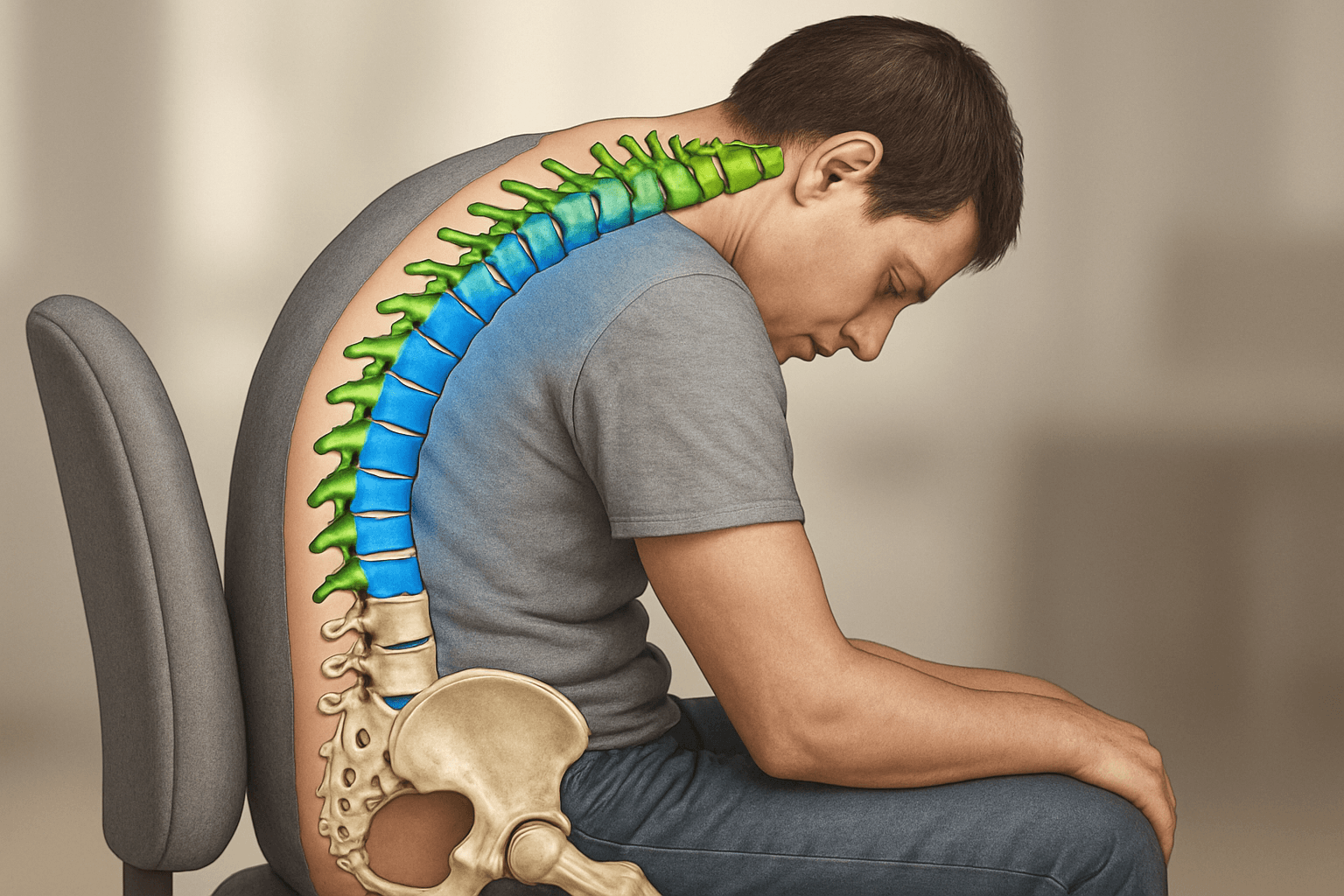Introduction
It’s easy to overlook posture—until your back is aching or your mood takes a nosedive. But did you know that the way you sit and stand could directly influence your stress levels and emotional health? Recent research and real-world experience suggest that posture correction isn’t just about avoiding aches and pains; it’s a powerful lever for improving mental resilience and emotional wellbeing. If you’ve ever wondered whether straightening your back could straighten out your day, you’re about to discover why the answer is a resounding yes.
Jump to:
TLDR – Quick Guide
- Posture correction can reduce stress by improving breathing, lowering muscle tension, and supporting nervous system function.
- Good posture is linked to increased feelings of confidence and reduced anxiety.
- Ergonomically set up workspaces boost both posture and emotional wellbeing.
- Slouching or poor posture is associated with negative mood, lower energy, and higher stress perception.
- Small daily changes—like mindful sitting, standing breaks, and posture reminders—deliver big long-term benefits.
Detailed Breakdown
The Mind-Body Connection – Why Posture Matters Beyond Pain Relief
Posture isn’t just physical. It shapes how we feel, think, and even how we react to stress. Scientific studies reveal that upright, open posture promotes positive emotions, while slumped posture is linked to increased anxiety, negative self-talk, and even depressive symptoms. The nervous system, muscles, and emotional brain centers are all intricately connected. When posture is compromised—think rounded shoulders, forward head, or a slouched back—the body is in a state of mild stress, often triggering a cascade of physical and mental reactions.
How Poor Posture Triggers Stress and Low Mood
Muscle and Nerve Tension and the Stress Loop
Poor posture forces certain muscle groups to overcompensate, leading to chronic tension in the neck, shoulders, and lower back. This physical discomfort acts as a constant, low-level stressor, signaling the brain that something is wrong.
Poor upper back posture also increases brain stem tension, directly causing mood changes to the brain.
Over time, this stress can create a feedback loop, amplifying feelings of frustration, irritability, and mental fatigue.
Impact on Breathing and Energy
Slouching restricts lung capacity, making it harder to take deep, relaxing breaths. Shallow breathing activates the sympathetic nervous system—the infamous “fight or flight” response—which increases heart rate, raises cortisol, and can leave you feeling anxious and on edge. By contrast, an open, upright posture allows for deeper breathing, helping to activate the body’s calming parasympathetic nervous system.
Posture, Self-Perception, and Mood
Your posture sends signals not only to others but to yourself. Psychologists call this embodied cognition—the idea that your body language shapes your mental state. Studies show that people who adopt confident, upright postures feel more optimistic and assertive, while those who hunch or collapse inward are more prone to negative self-evaluation.
The Science – What Research Tells Us
Research consistently finds that posture correction can have rapid effects on emotional state and stress perception. For example:
- Participants who sat upright during stressful tasks reported higher self-esteem and less fear than those who slouched.
- Students adopting “power poses” before exams performed better and reported lower anxiety.
- Chronic pain patients often see improvements in both pain and mood after postural training and awareness.
While posture correction alone won’t cure all causes of severe anxiety or depression, it’s a simple, accessible tool that supports emotional health as part of a holistic approach.
Simple Strategies for Better Posture and Emotional Wellbeing
Mindful Sitting and Standing
Practice sitting with your feet flat, shoulders relaxed but not rounded, and head aligned over your spine. When standing, distribute your weight evenly across both feet and avoid locking your knees.
Move Often—Break Up Long Periods of Stillness
Take short posture breaks every 30–60 minutes. Stand, stretch, or walk to reset your alignment and clear your mind.
Strengthen Postural Muscles
Exercises that target your core, back, and hips help maintain good posture with less effort.
Use Posture Reminders
Set digital reminders or place sticky notes in your workspace with cues like “Hold your phone higher” or “Unclench your jaw.” Small nudges add up to lasting change.
Postural Correction
The Advanced BioStructural Correction method helps to give most people effortlessly upright and stable posture. Helping you feel more relaxed and calm.
Real-World Benefits—What to Expect
With consistent effort, most people report:
- Reduced back, neck, and shoulder pain
- Greater energy and focus throughout the day
- Fewer headaches and tension-related symptoms
- Improved mood, confidence, and resilience to stress
- A positive shift in self-image and interpersonal interactions
Key Takeaways
- Posture correction is a scientifically supported way to reduce stress and improve emotional wellbeing.
- The mind-body link means that how you hold yourself physically affects how you feel mentally.
- Small, daily posture habits can yield significant improvements in both mood and stress levels.
- Mindful movement, posture training, and ergonomic adjustments all contribute to lasting results.
- A straight spine is more than a sign of good health—it’s a pillar of emotional resilience.
FAQs
Can improving my posture really reduce feelings of anxiety and stress?
Yes! Research shows that upright posture supports better breathing and lower muscle and nerve tension, all of which can help reduce stress and anxiety. Small posture adjustments also encourage a more positive, empowered mindset.
How long does it take to see emotional benefits from posture correction?
Many people notice improvements in mood and energy within a few days of making posture changes, especially if they’re consistent. For more lasting results, aim for several weeks of mindful practice and movement.
Is posture correction enough to treat depression or anxiety on its own?
While posture correction is a valuable tool, it’s best used as part of a holistic approach. For moderate to severe emotional health concerns, consult with healthcare professionals for comprehensive care.
What are some easy ways to start improving posture at work or home?
Simple steps like having a supportive chair taking regular breaks, and doing quick stretches can all make a big difference. Mindful awareness—catching yourself slouching and gently correcting it—is key.
Are posture-correcting devices or wearables effective?
No. They cannot give you true posture correction and only make you force your body straight. This can give some temporary relief but cannot offer any fundamental change.





